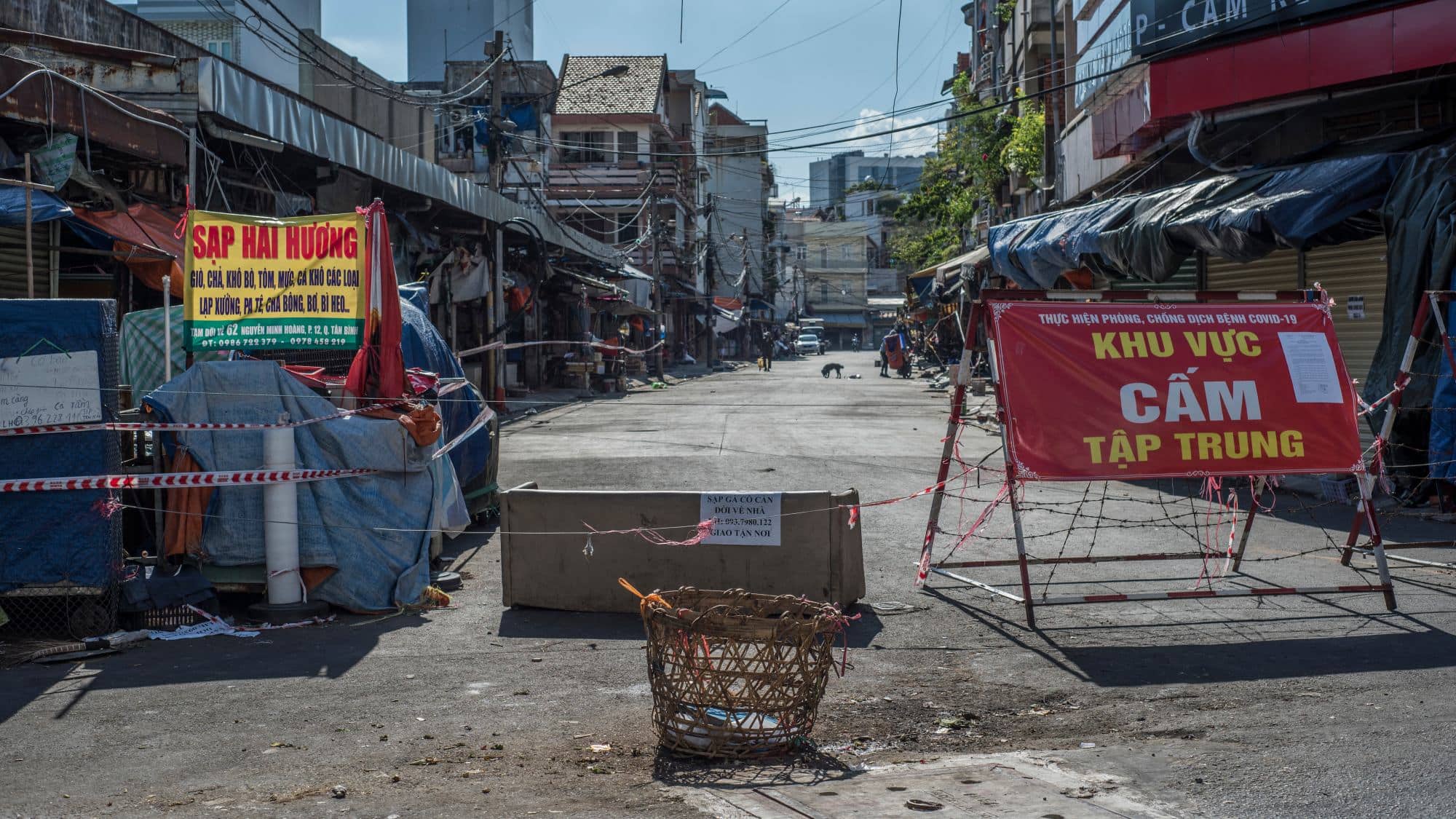A tale of two worlds
Living in Europe means I experienced an almost two-year period of working from home with limited social contacts. In the depths of despair in 2020, many European hospitals faced a significant shortage of ventilators, ICU beds and healthcare workers as severe cases rose rapidly.
However, vaccines helped mitigate the situation. After receiving two shots in the arm, I thought I could finally sit on a plane flying to Vietnam and visit my family after two long years.
Unfortunately, things shifted in the East. ASEAN countries that were once very successful in curbing the pandemic now became Asia’s COVID-19 epicentre. It feels like a deja vu for me seeing photos of overcrowded hospitals and fatigued healthcare workers as the Delta variant ravages Ho Chi Minh City.
However, my gut feeling tells me that the collateral damage might be worse in Vietnam.
Lockdown as a bitter pill for the economy

Limited safety nets and a large share of the informal sector in the economy mean Vietnam faces a stark trade-off between lives and livelihoods during lockdowns.
In Europe last year, it did not come to my attention that many people faced existential threats like no income or food. Governments in the rich world provided sufficient cash directly to households for an extended period.
In Vietnam, I have encountered heart-wrenching stories about low-income people searching for free food in the streets during lockdowns. Thanks to many charitable organizations and generous individuals, the poor can find some minimal support.
The government has provided financial aids to affected people. However, given budget deficits and a potential fall in tax revenues as firms struggle this year, the government’s pockets are tight to deliver any large-scale package.
Even office workers, a less vulnerable income group, greatly feel the economic impact. Many Vietnamese households count on the second source of income from their shops or businesses. Lockdowns mean no sales for the foreseeable future.
Given the hit on income, consumers are cutting back on spending. The second half of 2021 is likely a challenging period for the retail sector. If lockdowns are to prolong, many businesses might even go bust.
Factories face disruptions
Manufacturing held up well in the previous lockdowns. Whether it is the same this time, we will see. For now, leading indicators such as the Manufacturing PMI Survey pointed to a sharp decline in orders and output. Delivery times shot up to a near-record, implying temporary disruptions and bottlenecks in the industrial sector.
Unlike highly automated factories in advanced economies, Vietnam’s factories are labour-intensive, probably causing more disruptions to the manufacturing sector than earlier assumed.
However, factory managers are finding ways to prevent production delays while complying with official regulations. For example, thousands of workers are reported to sleep in factories to avoid commuting during lockdowns and keep production on track.
It all boils down to vaccination.

Vietnam was once a role model for the world of how to fight the pandemic. It only took the Delta variant a few weeks to ruin the records. Vietnam’s vaccination rates were barely at 4% of the population when the new wave hit.
General limited supply for emerging markets was behind the delay. However, an early COVID success also induced complacency. The government did not hurry to order vaccines at first, leaving Vietnam behind the vaccine queues, mentioned Barnaby Flower in an article on East Asia Forum.
Even people have been sceptical and concerned about severe side effects. I chat with different people back home and hear many talking about a wait-and-see approach: ‘I will wait to see if enough people get vaccinated’ or ‘I will wait until we have safer vaccines.’
The sentiment has only shifted recently after the COVID chaos in Ho Chi Minh City. The government became more proactive in procuring vaccines. More people are starting to sign up for vaccinations.

Nevertheless, Vietnam is falling behind the rest of ASEAN regarding the vaccination rate. As of the week ending 14 August, only 13% of the population has received the first dose. Neighbouring countries like Laos and Cambodia have already vaccinated more than 20-50% of their people.
Lockdowns might help to bring down the number of cases in the short term. Yet without sufficient coverage of vaccination, new waves of COVID-19 will develop, possibly with a new virulent chain of the virus. Additional month-long lockdowns then become unavoidable, shattering livelihoods once again.
In a country with millions of people living under the poverty line, Vietnam can not afford such economic fallout for a prolonged period. Hence, the pace of vaccine rollouts is critical to put an end to the tragedy.

